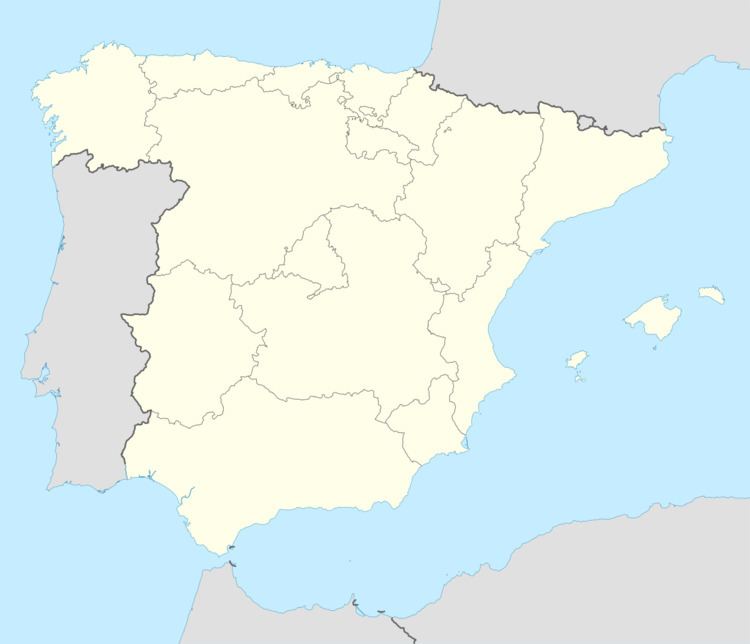 | ||
The United Nations Educational, Scientific and Cultural Organization (UNESCO) World Heritage Sites are places of importance to cultural or natural heritage as described in the UNESCO World Heritage Convention, established in 1972. Spain accepted the convention on May 4, 1982, making its historical sites eligible for inclusion on the list.
Contents
Sites in Spain were first inscribed on the list at the 8th Session of the World Heritage Committee, held in Buenos Aires, Argentina in 1984. At that session, five sites were added: the "The Mosque of Córdoba"; "The Alhambra and the Generalife, Granada"; "Burgos Cathedral"; "Monastery and Site of the Escorial, Madrid"; and "Park Güell, Palau Güell and Casa Milà, in Barcelona". Five sites were added in 1985, and another four in 1986. Apart from 1984, 1985, and 1986 (Spain's first three years as a member), 2000 saw the most new sites inscribed, with five that year. As of June 2016, Spain has 45 total sites inscribed on the list, third only to China (50) and Italy (51). Of these 45 sites, 40 are cultural, 3 are natural, and 2 are mixed (meeting both cultural and natural criteria), as determined by the organization's selection criteria.
The Pirineos - Monte Perdido World Heritage Site is shared with France, while the Prehistoric Rock-Art Sites in the Côa Valley and Siega Verde site is shared with Portugal. Besides that, Almadén is inscribed alongside Idrija in Slovenia. Of the 17 autonomous communities of Spain, Castile and León has the most sites, with six exclusive and two shared sites.
Additionally, Spain has established an agreement with UNESCO known as the Spanish Funds-in-Trust. The agreement was signed on April 18, 2002 between Francisco Villar, Spanish Ambassador and Permanent Delegate to UNESCO, and the Director-General of UNESCO, Kōichirō Matsuura. The fund provides € 600,000 annually to a chosen program. Programs include helping other member states, particularly in Latin America, with projects such as nominations processes and assessing tentative sites. Spain served as the chair of the World Heritage Committee in 2008 and 2009, and in 2009 hosted the 33rd Session of the Committee in Seville, Andalusia.
List of sites
The table lists information about each World Heritage Site:
Name: as listed by the World Heritage Committee Location: city or province of site Community: one of the 17 autonomous communities of Spain Period: time period of significance, typically of construction UNESCO data: the site's reference number; the year the site was inscribed on the World Heritage List; the criteria it was listed under: criteria i through vi are cultural, while vii through x are natural; (the column sorts by year added to the list) Description: brief description of the siteSites by autonomous community
Exclusive sites refer to sites locating in a single community. Shared sites refer to sites with entries in multiple communities, including Pirineos – Monte Perdido, which Aragon shares with France, and Prehistoric Rock-Art Sites in the Côa Valley and Siega Verde, which Castile and León shares with Portugal.
Tentative list
In addition to sites inscribed on the World Heritage list, member states can maintain a list of tentative sites that they may consider for nomination. Nominations for the World Heritage list are only accepted if the site was previously listed on the tentative list. As of 2016, Spain recorded 32 sites on its tentative list. The sites, along with the year they were included on the tentative list are:
- Monumental Wealth of the Ribeira Sacra, (Lugo and Ourense provinces) (1996)
- Romanesque Cultural Enclave in the North of Castile and León and the South of Cantabria, (province of Palencia and Cantabria) (1998)
- Bastioned fortresses in the Borders of Spain, (Aragon, Castile and León, Catalonia, Extremadura and Navarre) (1998)
- The Vía de la Plata (1998)
- Mediterranean Windmills, (Castile-La Mancha, Murcia and Valencian Community) (1998)
- Dry stone architecture, (Valencian Community)
- Wine and Vineyard Cultural Itinerary through Mediterranean Towns (1998)
- Extension of the Site of El Escorial (1998)
- Cultural Route of Saint Francis Xavier (2001)
- Archaeological Site of the Greco-Roman port of Empúries, (L'Escala comarque, Girona, Catalonia) (2002)
- Dinosaur Sites in the Iberian Peninsula, (Aragon, Asturias, Castile and León, Catalonia, La Rioja and Valencian Community). Site shared with Portugal (2002)
- The Mediterranean Facet of the Pyrenees, (Catalonia). Site shared with France (2004)
- Roman Roads in Europe, (Andalusia, Castile-La Mancha, Catalonia and Valencian Community). Site shared with other countries on the continent (2007)
- Os Ancares – Somiedo, (Galicia, Castile and León and Asturias) (2007)
- Ferrol of the Illustration Historical Heritage (2007)
- Historic Center of Las Palmas de Gran Canaria (2007)
- Loarre Castle, (Aragon) (2007)
- Mining Historical Heritage (2007)
- Plasencia - Monfragüe - Trujillo: Mediterranean Landscape (Extremadura) (2009)
- Mesta Livestock trails, (Castile and León) (2007)
- Jaén Cathedral: as extension of the Renaissance Monumental Ensembles of Úbeda and Baeza (2012)
- Cultural Landscape the Salt Valley of Añana and Poza de la Sal, (Basque Country and Castile and León) (2012)
- Talaiotic Culture in Minorca (2013)
- The Cultural Landscape of the Wine and the Vineyards of La Rioja and the Alavan Rioja (Basque Country and La Rioja) (2013)
- Priorat-Montsant-Siurana. Agricultural Landscape of the Mediterranean Mountains, (Catalonia) (2014)
- Portal of Santa Maria de Ripoll Monastery (Catalonia) (2015)
- Medina Azahara, (Andalusia) (2015)
- Site of Buen Retiro and El Prado in Madrid (2015)
- Extension to the Joint World Heritage Property "Primeval Beech forests of the Carpathians" (Slovak Republic and Ukraine) and the "Ancient Beech forests of Germany" (Germany). Site shared with Spain and various countries (2015)
- Hill of the Seu Vella of Lleida (2016)
- Monastery of Santa María de La Rábida and the Columbus Places, (Andalusia) (2016)
- Fallen Rough Cliff and the Sacred Mountains of Gran Canaria, (Canary Islands) (2016)
